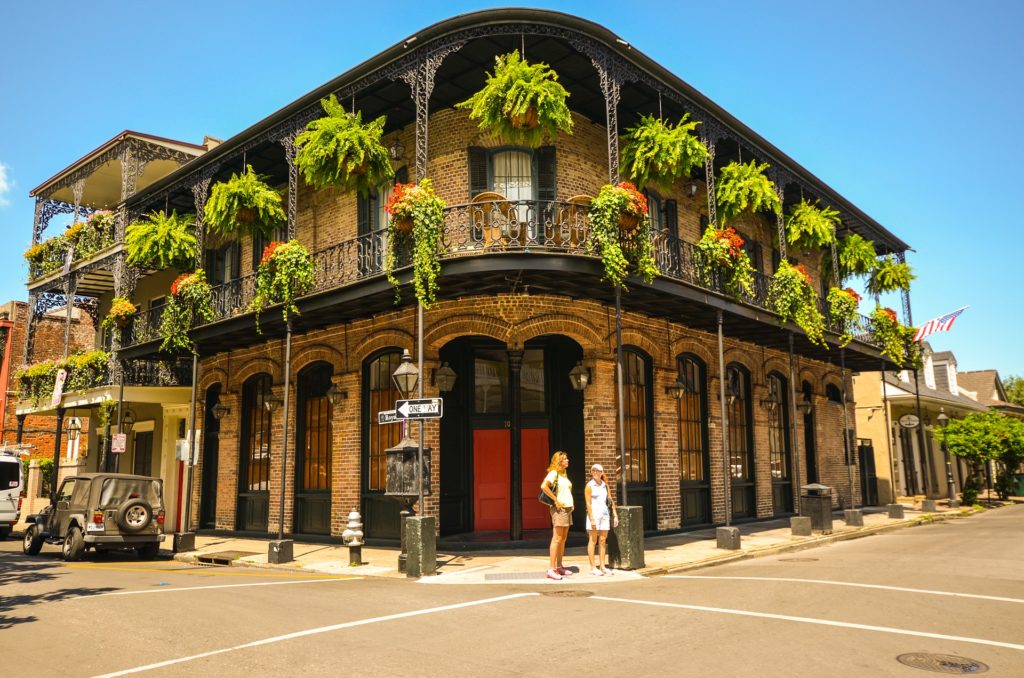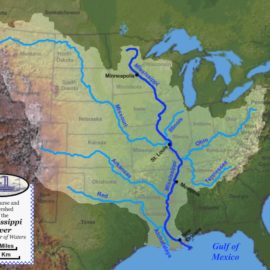
The sea is rising and land loss is occurring. New Orleans is in the path of this twin occurrences and a solution is there at $2 billion and the loss of some communities between us and the Gulf. These communities are collateral damage in the effort to maximize protecting the many at the loss of a few.
When Franck Labiche moved to Happy Jack in 1969, the houses, nestled on a strip of land between two canals, were built on the ground. “Back then, it never flooded,” the 75-year-old business owner said, sitting around a table with other property owners ahead of a weekend crawfish boil. Five decades later, most of the hamlet’s 80 houses reach toward the sky, elevated more than 10 feet. That’s because Louisiana’s coastal loss and rising sea levels have induced more routine flooding even on days without a storm. Water blown north by a strong southerly wind laps from canals over docks and roads, even gurgling up from the ground as the water table rises. Now a $2 billion project pushed by the state government and nonprofits aims to rebuild part of the coast, by bolstering a natural barrier between the Gulf of Mexico and the 1.2 million people living in greater New Orleans. But it’s unlikely to protect Happy Jack and a string of five other small West Bank communities outside the federal hurricane protection levees of Plaquemines Parish; in fact, they would experience the opposite: more flooding. “We’re the collateral damage,” said Darlene McGarry, 62, who spends half the year with her husband, Scott, in their four-bedroom summer home in Happy Jack. “We’re the ones [who] are going to suffer.”
nola.com
The people of Happy Jack, Myrtle Grove, Grand Bayou, Lake Hermitage, Suzie Bayou and Woodpark are all in the path of losing their homes. To what? The Mid-Barataria Diversion which is going to put silt into Barataria Bay. 21 square miles of rebuilt land over the next 50 years is the goal. Myrtle Grove Estates and Marina are 2.5 miles from the diversion and they will flood three times as often as now. Grand Bayou, an indigenous community only reached by boat, will flood twice as often. Lake Hermitage, Suzie Bayou and Woodpark flooding increases will fall between two and three times more per year.
Of the 532 parcels outside levee protection, a few contain people’s only houses. Others keep second homes and docks as an escape, a slice of paradise, despite days that they look out their window to see the road covered with water. Beyond an increase in routine flooding, they expect their property values to decline as a result of the diversion project, reducing tax revenue for the parish government. Too, some canals that they use to get their boats to the bay or their fish to the docks will silt up without more maintenance dredging, according to the Army Corps of Engineers’ draft Environmental Impact Statement on the Mid-Barataria undertaking.
Even now, before the diversion is built, the residents say they are having trouble selling their homes. Those who only own lots now question what they can build.
Full-time residents Cindy Kuehne, and her husband, Greg, have invested more than $750,000 in their two lots in Myrtle Grove, moving there in 2019. Others have spent more than $1 million in a community that is collectively worth more than $52 million, based on estimates from the Corps’ report. Kuehne said she and her husband didn’t buy their property blindly; they were well-aware of the risks associated with hurricanes and rising tides. “We can accept that natural flooding. We agreed to take the hit with the natural storms,” said Kuehne. “The diversion is a man made project.”
Included in the Diversion money are restitution dollars for those impacted by it.
To compensate for the diversion’s threat, coastal authority officials propose spending $305 million on mitigation ranging from raising roads and septic systems to buyouts. Brad Barth, project manager for Mid-Barataria, said meetings have brought the communities’ problems to the forefront. “It’s bringing to light that we already are experiencing troubles with our communities outside hurricane protection with these flooding events,” he said. “This project has the opportunity to potentially help out with an existing situation.” Flooding will only worsen as the climate warms worldwide, causing the sea on the Louisiana coast to rise almost 2¼ feet by 2070; the diversion will just accelerate it. McGarry and Kuehne recognize the realities of sea level rise. But they would rather it increase gradually increase than come all at once. The McGarrys have already raised their concrete slab and docks since building on their property in the early 2000s. “We keep up with it,” McGarry said. “This diversion is going to be a double whammy.”
If the Diversion is approved, it will still be 5-6 years, not including court cases filed to stop it, until the effects are starting to be felt. There is time for mitigation efforts to be started. There have been a lot of hearings and various communities have chimed in with comments and votes. New Orleans voted for it.
Passions often ran hot. The distrust between residents and the state was palpable at times. Many residents wanted more specifics, which state officials were reluctant to commit without residents’ input – a mistake they’ve made in the past. The project has become a point of contention for coastal communities. Both the Plaquemines and St. Bernard Parish councils oppose the diversion, as does Lt. Gov. Billy Nungesser, a former Plaquemines president.
With these high passions and the divergence between ideas mean unity and compromise may not be possible.
t won’t be easy for both sides to come together, said Steve Cochran, campaign director for the nonprofit Restore the Mississippi River Delta Coalition. His coalition advocates for coastal restoration in Louisiana, including river diversions. He thinks it will take time to overcome the long history of disagreement between the state and some factions of Plaquemines, including its fishers. “There are people who make a living being facilitators to help opposing groups come to an agreement. That’s because it’s hard to do,” Cochran said. “It’s essential that those communities be directly involved in coming up with these ideas, and it’s essential that the state remain sincere in what they’re offering.” The coastal authority’s executive director, Bren Haase, said his agency plans to return to lower Plaquemines’ West Bank communities in the summer with more detailed proposals.
The mitigation plan will be ready later this year, before the the final EIS is published. This action is a classic case of “the greatest benefit to the greatest number of people“.



